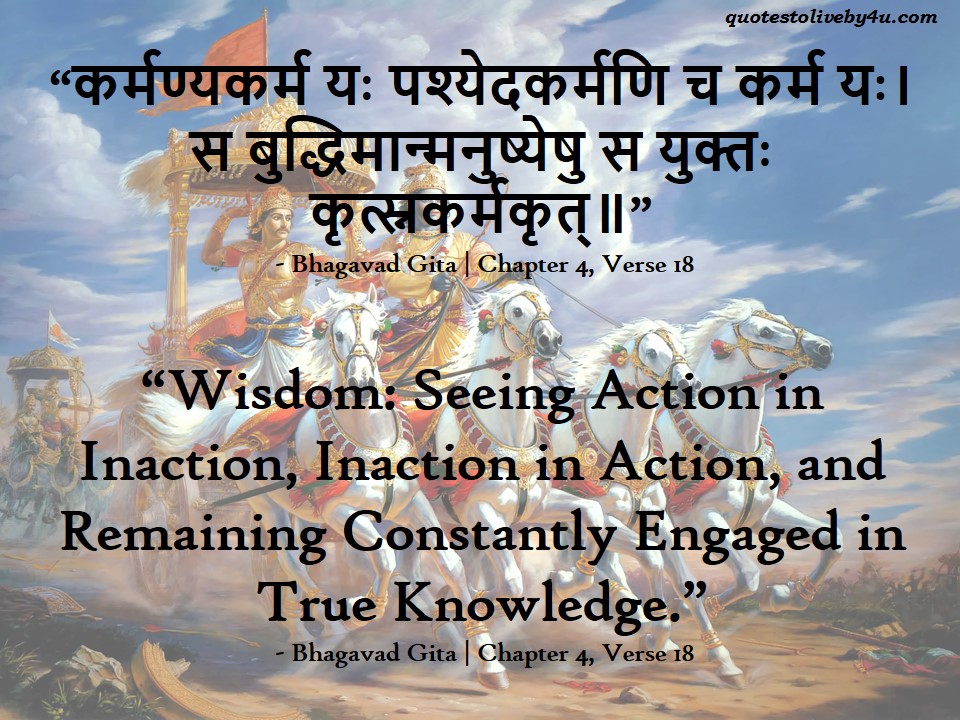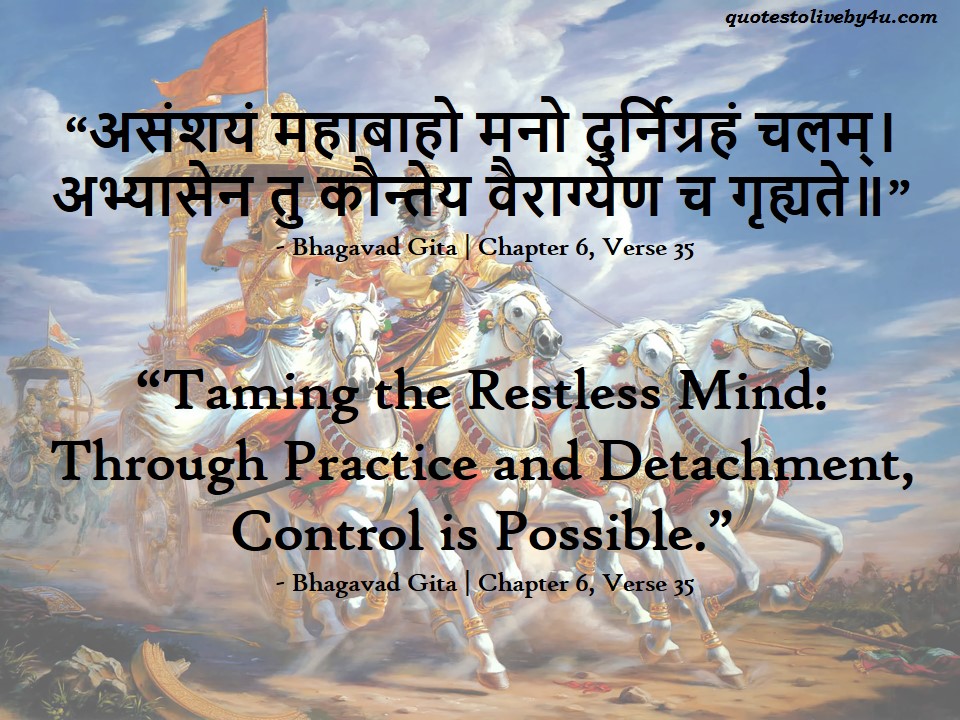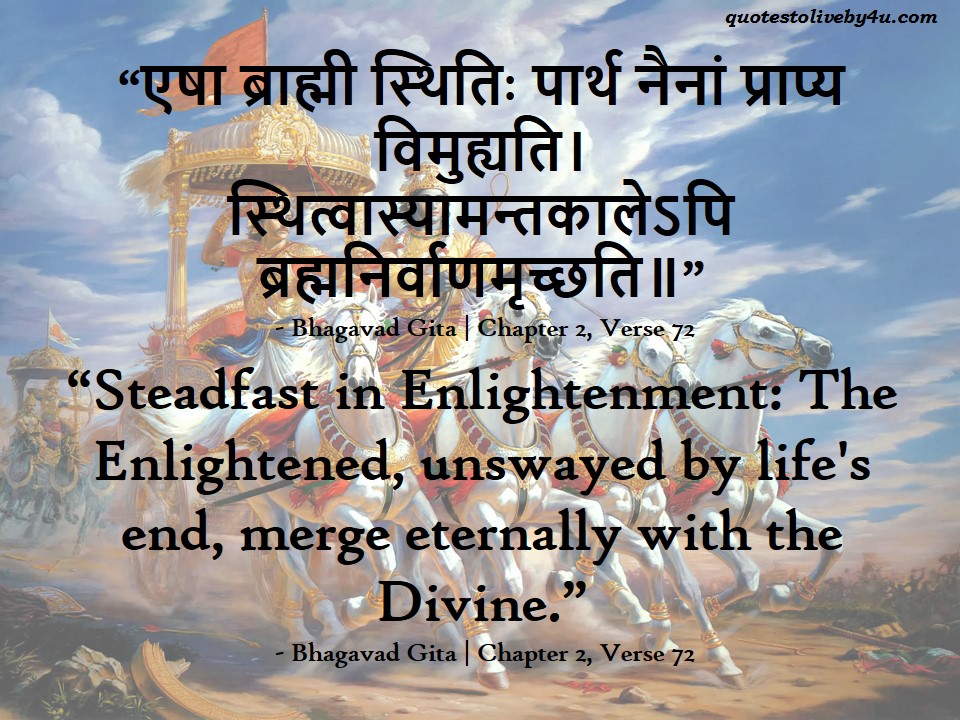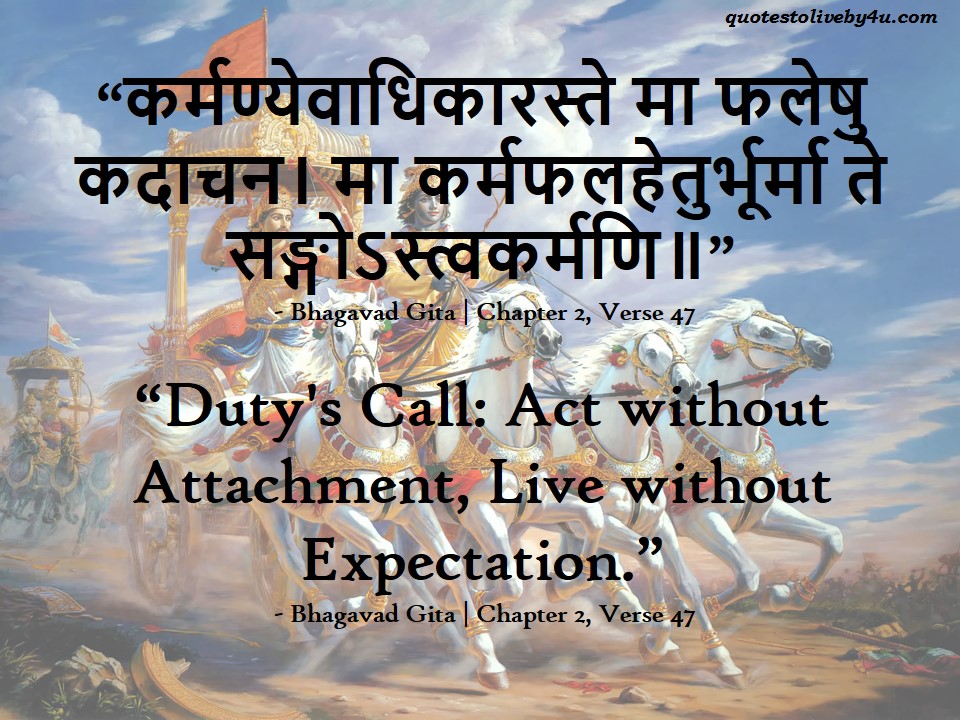This verse from Chapter 4, Verse 18 of the Bhagavad Gita holds profound insights into the nature of action, inaction, and wisdom. It teaches that true wisdom lies in understanding the subtleties of action and inaction and being engaged in a purposeful way. Let’s explore its meaning and practical applications through everyday examples:
Verse: "कर्मण्यकर्म यः पश्येदकर्मणि च कर्म यः। स बुद्धिमान्मनुष्येषु स युक्तः कृत्स्नकर्मकृत्॥"
Translation: “The one who sees inaction in action and action in inaction is wise among human beings. Such a person is in the true path of knowledge and is situated in a state of constant engagement.”
Explanation with Examples:
- Contemplative Mindfulness: Imagine a person sitting in deep meditation, seemingly in a state of inaction to an observer. However, within their mind, they are engaged in profound inner contemplation, exploring the depths of their consciousness. Although externally they may appear inactive, they are actively involved in the process of self-discovery. This illustrates the concept of seeing action in apparent inaction.
- Parenting and Nurturing: A parent caring for a child might not be engaged in paid employment, but they are certainly active in nurturing and guiding the child’s growth and development. Despite not being in a traditional workplace, their actions in raising a child are significant and purposeful. This exemplifies the idea of recognizing action in apparent inaction.
- Leadership and Decision-Making: In a leadership role, there are moments when one must make strategic decisions that may not involve immediate physical action. However, the thought processes, analysis, and planning that go into those decisions are forms of action at a mental and strategic level. Effective leaders understand that their decision-making is a form of action, even if it doesn’t involve physical tasks.
- Philanthropy and Service: Someone involved in philanthropic work may not receive monetary compensation for their actions, but they are actively engaged in serving and uplifting the community. Their service is a form of meaningful action, even if it doesn’t involve personal gain.
- Environmental Conservation: Advocates for environmental conservation might spend hours in quiet observation of nature, seemingly inaction, but they are actively engaged in understanding ecosystems and promoting sustainable practices. Their “inaction” aligns with the broader action of preserving the environment.
This verse underscores the idea that wisdom involves perceiving the deeper dimensions of action and inaction. It encourages us to recognize that meaningful engagement can take various forms, not solely physical activity. A person who comprehends this balance is considered wise. They act with purpose and are “situated in a state of constant engagement” because they understand that even moments of stillness or contemplation can be purposeful and productive. Ultimately, it invites us to see beyond surface appearances and appreciate the deeper significance of actions and inactions in our lives.
Know about Bhagavad Gita
The Bhagavad Gita, often referred to as the Gita, is a sacred scripture of Hindu philosophy and spirituality. It is a 700-verse dialogue between Lord Krishna and the warrior Arjuna, set on the battlefield of Kurukshetra during a time of moral crisis. The Gita is a part of the Indian epic, the Mahabharata.
The text addresses profound philosophical and ethical questions, exploring concepts such as duty (dharma), righteousness, devotion, selfless action, and the nature of reality. It offers guidance on how to live a life of purpose, integrity, and spiritual fulfillment while navigating the challenges of the world.
The Bhagavad Gita introduces various paths to spiritual realization, including Karma Yoga (the path of selfless action), Bhakti Yoga (the path of devotion), and Jnana Yoga (the path of knowledge). It teaches the importance of performing one’s duties without attachment to the results, maintaining equanimity in success and failure, and recognizing the interconnectedness of all beings.
The Gita’s teachings extend beyond religious boundaries, resonating with individuals seeking wisdom, ethical insights, and a deeper understanding of life’s complexities. Its universal principles have inspired thinkers, philosophers, leaders, and individuals from various backgrounds across the world. The Bhagavad Gita remains a timeless guide that encourages self-awareness, personal growth, and the pursuit of a harmonious and meaningful existence.




